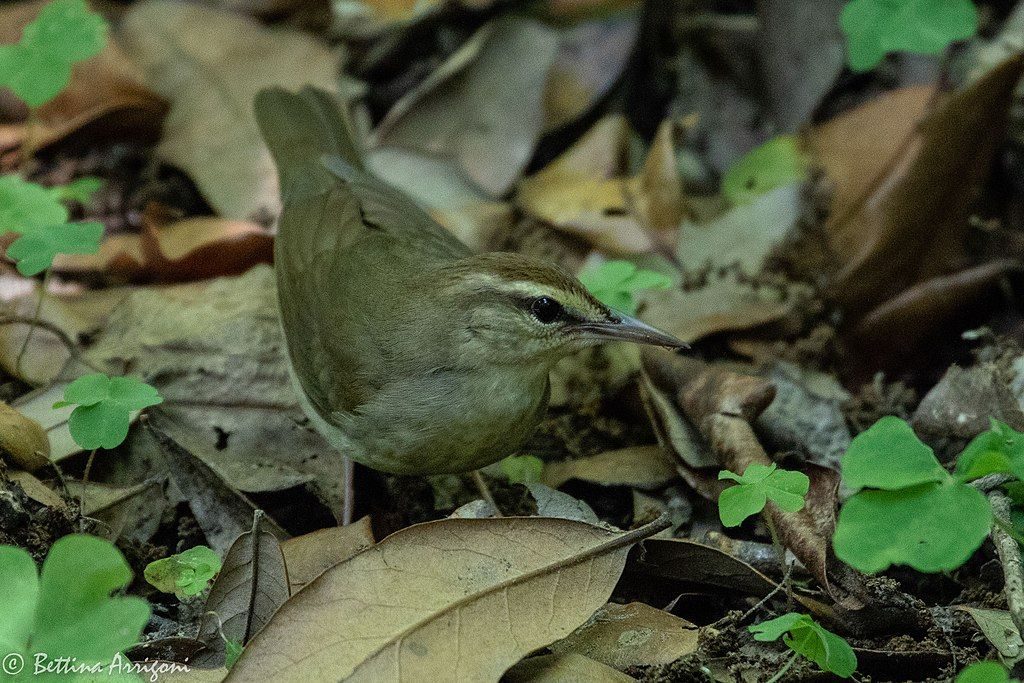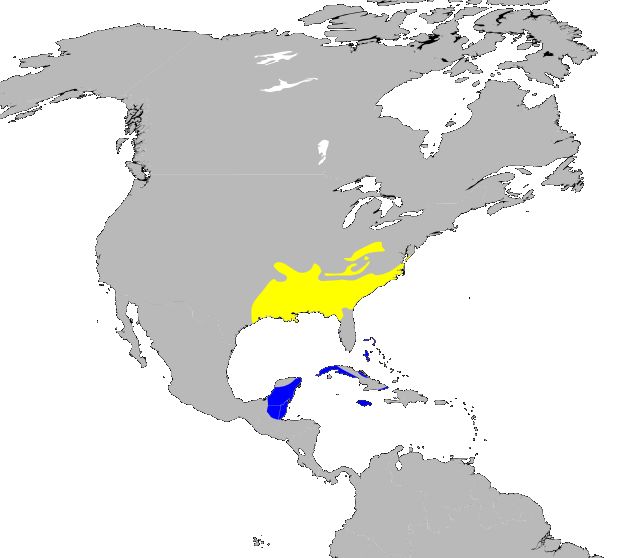
I’ve seen the Swainson’s thrush and Swainson’s hawk. My goal last weekend was to hear and see a Swainson’s warbler.
Like the other two birds the Swainson’s warbler (Limnothlypis swainsonii) was named for English ornithologist William Swainson FRS, FLS (1789-1855) but unlike them he’s hard to find.
To begin with, Swainson’s warblers don’t breed in Pennsylvania. The northernmost corner of their range is a 3.5 hour drive from Pittsburgh. Three of us went to New River Gorge, West Virginia.

We found his breeding habitat …
Breeds in southern forests with thick undergrowth, especially canebrakes and floodplain forests in lowlands and rhododendron-mountain laurel in the Appalachians.
from species account at All About Birds
… and stood quietly in a rhododendron thicket where he’s known to breed. We listened for this.
Listening is important. Swainson’s warblers skulk in shadowy, deep thickets and are rarely seen.
We heard one (“He’s in there!”) but he never came out.
Fortunately listening counts.
(photos and maps from Wikimedia Commons, sound from Xeno Canto; click on the captions to see the originals)
p.s. Here’s how thick the rhododendrons are in West Virginia, in a blog post by Samuel Taylor.
Read “Follow the River,” Thom. Wonderful description of the New River valley with it’s Rhododendron thickets. Based on true story of Indian capture and escape by young woman. I read in the 1950’s and it’s beauty remains.
Nan, one of my friends bought the book and began reading it on the way home in the car. Hair raising story in the beginning. Yikes!
I am the great-great-grandson of William Swainson. I appreciate that you have taken the time to create this page, however, I am concerned that the name “William J Swainson” is incorrect. Please note that his son (and my great-grandfather) was named William John Swainson (Willie), not his father.
Unfortunately, in 2007, someone added John as a middle name to Wikipedia (with no source to verify the change), and it is starting to be added incorrectly to websites, family trees and even books. Interestingly, Wikipedia’s sources link to places that show his name as William Swainson. Wikipedia has now been corrected so the family would love to see this corrected to William Swainson FRS, FLS. or just William Swainson.
Regards
Tim Swainson
Thank you for the correction. I’ve made the change.
Thank you, much appreciated